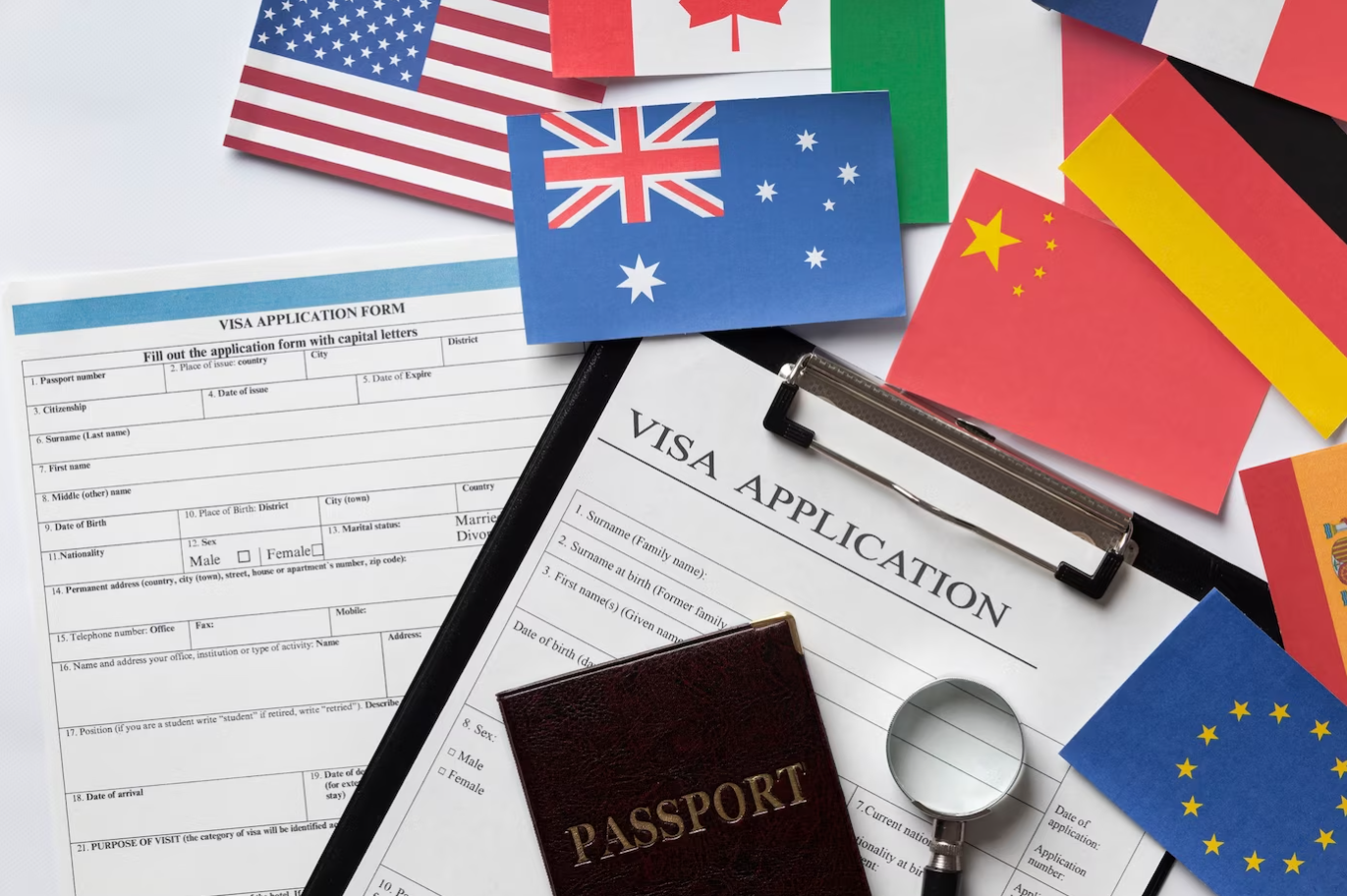Navigating the labyrinthine world of visa applications can be daunting, and often the smallest detail can trip up even the most meticulous traveler. One such detail, though deceptively simple, holds the potential to derail your journey: the visa photo. Far from a casual snapshot, visa photos are meticulous portraits scrutinized for adherence to a diverse tapestry of international regulations. Understanding these diverse requirements, a labyrinth in itself, becomes an essential passport to unlocking your international aspirations. This paper delves into the intricacies of visa photo specifications, demystifying the seemingly arbitrary demands of different countries and equipping you with the knowledge to present your best face, figuratively and literally, to the world.
Overview of the Visa Application Process
The visa application process is a multifaceted procedure that individuals must navigate when seeking entry to a foreign country. It involves a series of steps, with each stage playing a crucial role in the ultimate decision regarding the granting or denial of a visa. Among these steps, the submission of visa photos stands out as a fundamental requirement, serving as a means of visual identification and verification for the authorities.
The significance of visa photos cannot be overstated, as they contribute to establishing the identity of the applicant and play a pivotal role in the overall security of the visa issuance process. Applicants are typically required to submit recent and clear photographs that adhere to specific guidelines set forth by the immigration authorities of the destination country. These guidelines encompass various aspects, such as photo size, background color, facial expression, and head positioning.
In essence, visa photos are not merely a formality but a crucial component in the broader context of the visa application. As technology advances, the process of submitting visa photos has evolved, incorporating innovations to enhance accuracy, security, and the overall experience for applicants. This paper delves deeper into the intricacies of the photo requirements, exploring both commonalities and disparities across different countries, to provide a comprehensive understanding of this critical aspect of the visa application process.
Common Elements in Visa Photos
When considering the common elements in visa photos, it is essential to recognize the universal criteria that transcend borders and apply to various countries’ visa application processes. One of the primary factors is the size and dimensions of the photo, often standardized at 2×2 inches or 35×45 mm. This consistency facilitates the handling of documents and ensures uniformity in visa records.
Another crucial element is the background against which the photo is taken. Most countries stipulate a plain, white background to eliminate distractions and maintain a clear focus on the applicant’s facial features. The neutral facial expression is also a shared requirement, with closed mouths and open eyes being preferred to facilitate accurate facial recognition.
Head positioning plays a significant role, with guidelines often specifying that the applicant should face the camera directly, ensuring a full and unobstructed view of the face. Additionally, some countries may require the visibility of the ears or have specific regulations regarding the framing of the head within the photo.
To provide a clearer understanding of the common elements, the following table summarizes the typical requirements for visa photos:
Differences in Photo Requirements:
Understanding the nuances and variations in visa photo requirements across different countries is crucial for applicants to ensure compliance with specific guidelines. The differences can span various aspects, creating a diverse landscape of prerequisites that applicants must navigate.
Size and Format:
- Different countries may have distinct preferences regarding the size and format of visa photos. For example, while the standard 2×2 inches or 35×45 mm is prevalent, some countries may accept slightly different dimensions.
- It is imperative for applicants to meticulously follow the size and format specifications outlined by the immigration authorities of the destination country.
Headgear and Accessories:
- The acceptance of headgear and accessories in visa photos varies. Certain countries may permit religious headgear, while others have stringent regulations against any form of head covering.
- Applicants need to be aware of and adhere to the specific rules regarding headgear and accessories to avoid delays or complications in the application process.
Facial Features:
- Some countries may have explicit requirements for facial features in visa photos. This could include mandates for a clear view of the ears, restrictions on smiling, or guidelines on the visibility of certain facial characteristics.
- Applicants should carefully review and comply with these specifications to ensure that their photos meet the detailed facial feature requirements.
Background Color:
- While a plain, white background is a standard requirement, some countries may deviate from this norm. Certain destinations may specify different background colors or have restrictions on patterns or textures.
- Applicants must be attentive to the background color requirements to avoid potential rejections based on non-compliance.
| Aspect | Common Requirement | Examples of Variations |
| Size and Format | 2×2 inches or 35×45 mm | Some countries may accept 50×50 mm or 40×60 mm formats |
| Headgear and Accessories | Restriction on headgear and accessories | Religious headgear allowed in some countries |
| Facial Features | Neutral expression, open eyes, and closed mouths | Some countries may specify a clear view of ears |
| Background Color | Plain, white background | Certain countries may allow light blue or light gray |
Challenges and Difficulties
Navigating the intricate landscape of visa photo requirements is not without its share of challenges, posing hurdles and complexities for applicants throughout the application process.
- Ambiguity in Guidelines: The presence of vague or unclear photo guidelines issued by immigration authorities stands out as a primary challenge. The lack of explicit instructions can sow confusion among applicants, potentially resulting in non-compliance with specific requirements. To mitigate this challenge, individuals must engage in meticulous reviews of guidelines, seeking clarification from official channels or embassy representatives when uncertainties arise.
- Consistency Across Applications: Maintaining uniformity in photo quality and adherence to requirements across diverse visa applications proves to be a formidable challenge, especially for individuals with frequent travel needs. The differing guidelines established by each destination country may inadvertently lead to variations in the photo submission process. To address this, applicants must adopt a standardized approach, familiarizing themselves with the unique requirements of each destination and ensuring consistency in their submissions.
- Rapid Changes in Regulations: An additional challenge stems from the dynamic nature of visa photo regulations. Immigration authorities may institute rapid changes, catching applicants off guard and necessitating swift adjustments to the submission process. Staying informed about regulatory updates through official channels and embassy communications is essential to avoid unexpected hurdles and complications.
- Technical Constraints and Quality Issues: Meeting stringent technical requirements, including pixel resolutions and file formats, introduces a set of challenges for applicants utilizing diverse cameras and devices. Technological advancements in photo capture and validation tools offer potential solutions, but applicants must remain vigilant to ensure their equipment aligns with the specified specifications, minimizing the risk of quality-related complications.
- Biometric Challenges: Certain countries’ requirements for biometric features in visa photos add a layer of complexity. Accurate capture of biometric information, such as facial recognition points, becomes crucial for a successful application. While advancements in biometric recognition technology provide assistance, applicants must take proactive measures to guarantee precise compliance, reducing the likelihood of discrepancies and delays.
Addressing these challenges demands a combination of careful attention to detail, proactive communication with relevant authorities, and leveraging available technological resources. By navigating these difficulties strategically, applicants can enhance their prospects of a successful and streamlined visa application experience.




